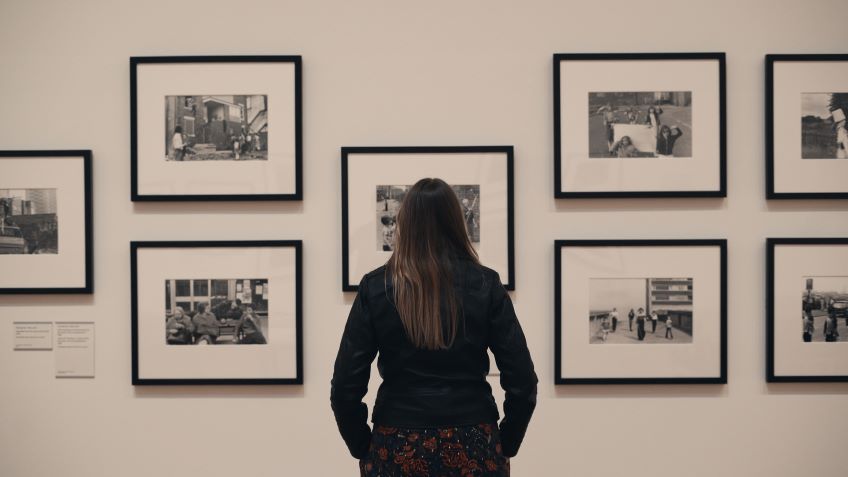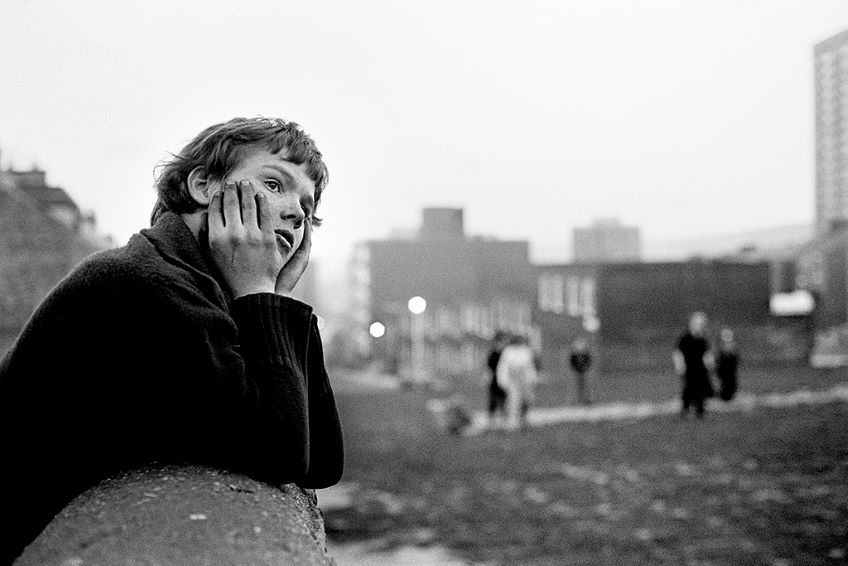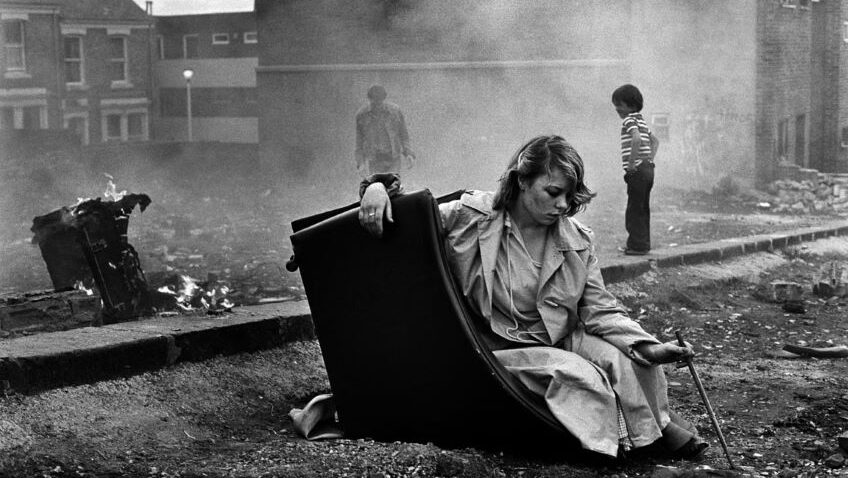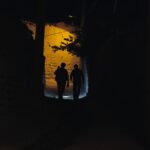Joyce Glasser reviews Tish (November 17, 2023) Cert. 15, 90 mins. In cinemas.
Tish Murtha discovered she was pregnant in 1983, while on assignment in Soho’s Red Light District, staying up all night following “the circuit” and befriending performers in the peep shows. Her daughter, Ella, who has devoted her life to building her mother’s legacy, grew up in Elswick and around Newcastle Upon Tyne. For Ella, the domestic clothes line was full of prints pinned up to dry. Tish worked at night when her home was a darkroom, and her sink was not full not of dishes, but of developer, stop baths and fixers. The photographs that we see in this riveting biodoc are astonishing. Praise be to director Paul Sng and Ella for honouring this shamefully undervalued and little-known talent.
Tish’s own childhood was only a little more conventional. Born in post war South Shields, the third in a family of 10 children, the clothes lines were full of second-hand clothes, but the house was full of opera music and creativity, fostered by her mother. Tish ran around with a camera without film in it until she was 15.
She had the trust of the local community, an intuitive eye and compassion, all apparent in her photojournalism. Her sister Eileen says, ‘she had to go to school for the technique, but she already had the content; she lived it.’ Good fortune and chance encounters saw her leaving home at age twenty to study at the School of Documentary Photography at the University of Wales.

Tish’s individuality and uncompromising personality stood out, even in this pioneering programme set up three years earlier, in 1973, by David Hurn. Hurn was an established Magnum photographer who shot a series of stills for From Russia with Love and loaned his own LP-53 air pistol to the production when their prop for the posters did not arrive. He was the guarantor of Tish’s first professional camera.
‘If you are going to photograph the tribe, you have to be part of the tribe’ we are told by one of the many friends, colleagues, mentors and family members who enrich the documentary with their memories. ‘You did not mess with Tish because you didn’t want her brothers after you – and you really didn’t want her father’, says another.
There is not much in the film on that subject, but we find out that her father was a volatile man and a wife abuser. Whether or not he abused his children, we do not know, but there was a short period where all the children were taken into care and separated. We do not learn how this affected Tish, or what happened when the children returned to their parents.
Tish’s domain, according to her sister Eileen, ‘was the worst square mile in England’. But, like the French poet Charles Baudelaire, she could say, ‘you gave me your mud, and I turned it into gold.’
For Tish’s younger brothers and sisters, the playgrounds were the bombed out buildings of South Shields that no one was rebuilding, and that were not even all empty. The kids found treasures in the detritus, and the crumbling pillars were the ramparts of castles. Tish’s spontaneous, unposed shots of adorable children playing and laughing in the dusty slums are so full of life and movement, they look like stills from a film. You will want to feast on them longer than the shots in the film allow.

Tish’s photographs appear in the context of child poverty that the children are unaware of and the strong sense of social injustice she acquired: informed first hand by her siblings and her surroundings. If the playgrounds were bombed houses, the possibility of a job in the shipyards and coalmines was dwindling. Three million on the dole, and Carl wanted to be an actor. He showed up for an interview at the Youth Opportunity Scheme, ‘but when they learned you were from Elswick, they weren’t interested.’ Those in the scheme were considered, statistically, as employed, but for the young people of Elswick, there was no training or aspirational job development. Their prospects were sweeping the streets of Newcastle.
In addition to the quality of Tish’s photography, one of the revelations of the documentary is her writing skill which is on an equal par. We hear selections of persuasive, articulate, well researched articles on community issues that are full of passion but never polemical or fiery. Where she learned to write so well we will never know. But listening to her writing (read by actress Maxine Peake) makes one think what a great MP she would have made.
But her accomplishments, let alone her potential, were undervalued. Ella has gathered some of Tish’s photographs into three books that together capture some of the best examples of her spirit and style: Youth Unemployment, Elswick Kids and Juvenile Jazz Bands. There is a story of Tish standing up against this band tradition. She condemned them as being run by “failed sergeant majors and bullies” and a waste of time as they were neither recreational nor creative. When she was criticised for her attack on the bands, she organised a public debate.
In her mid-fifties, when she should have been teaching photography, or making it, and her photographs should have been touring world museums as historical documents with urgent relevancy, Tish was sending out her CV to retail centres and restaurants and keeping the heat off to save money. The end of her life is as much a commentary on social injustice as any of her articles, speeches or photographs.
Tish died of a brain aneurism in 2013, age 57. Thanks to Ella, her photographs appear in books, there was a great exhibition at the Photographers’ Gallery in London in 1918, the University of South Wales is digitising her photographs and her archive has found a home at the Tate. The Tate report that her photographs were on display until 2022. But there is no corresponding exhibition, let alone a major retrospective, anywhere in the country to coincide with the release of the film.




